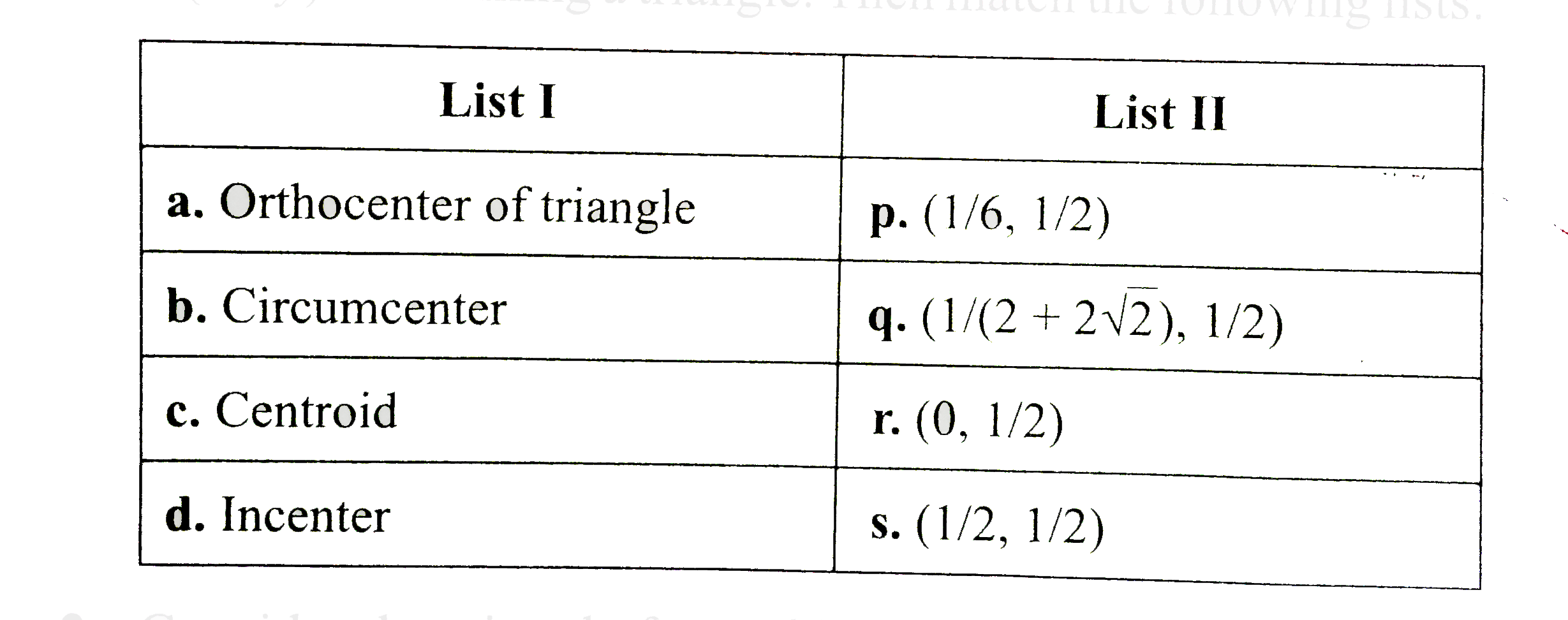Consider the equation y−y1=m(x−x1) . If mandx1 are fixed and different lines are drawn for different values of y1, then (a)the lines will pass through a fixed point (b)there will be a set of parallel lines (c)all the lines intersect the line x=x1 (d)all the lines will be parallel to the line y=x1Solution in Tamil
the lines will pass through a fixed point
there will be a set of parallel lines
all the lines intersect the line x=x1
all the lines will be parallel to the line y=x1
The correct Answer is:B, C
Draw the diagram and verify.
Topper's Solved these Questions
- STRAIGHT LINESBOOK - CENGAGECHAPTER - STRAIGHT LINESEXERCISE - Exercise (Comprehension)
27 Videos
- STRAIGHT LINESBOOK - CENGAGECHAPTER - STRAIGHT LINESEXERCISE - Exercise (Matrix)
8 Videos
- STRAIGHT LINESBOOK - CENGAGECHAPTER - STRAIGHT LINESEXERCISE - Exercise (Single)
82 Videos
- STRAIGHT LINEBOOK - CENGAGECHAPTER - STRAIGHT LINEEXERCISE - Multiple Correct Answers Type
8 Videos
- THEORY OF EQUATIONSBOOK - CENGAGECHAPTER - THEORY OF EQUATIONSEXERCISE - JEE Advanced Previous Year
9 Videos
Similar Questions
Let L be the line belonging to the family of straight lines (a+2b) x+(a-3b)y+a-8b =0, a, b ∈R, which is the farthest from the point (2, 2).
Area enclosed by the line L and the coordinate axes is
View SolutionConsider the lines represented by equation (x2+xy−x)×(x−y)=0 forming a triangle. Then match the following lists:

View SolutionFind the equations of the diagonals of the square formed by the lines x=o,y=0,x=1andy=1.
View SolutionThe point P(α,α+1) will lie inside the triangle whose vertices are A(0,3),B(−2,0) and C(6,1) if
View SolutionQ. Let p and q real number such that p≠0,p2≠q and p2≠−q. if α and β are non-zero complex number satisfying α+β=−p and α3+β3=q, then a quadratic equation having αβ and βα as its roots is
View SolutionProve that the line through the point x1,y1) and parallel to the line Ax+By+C=0 is A(x−x1)+B(y−y1)=0.
View SolutionProw that the line through the point (x1,y1)and parallel to the line Ax+By+C=0is A(x−x1)+B(y−y1)=0.
View SolutionA line passes through (x1,y1)and (h,k). If slope of the line is m, show that k−y1=m(h−x1).
View SolutionConsider the equation y−y1=m(x−x1) . If mandx1 are fixed and different lines are drawn for different values of y1, then
View SolutionConsider the equation y−y1=m(x−x1) . If mandx1 are fixed and different lines are drawn for different values of y1, then (a) the lines will pass through a fixed point (b) there will be a set of parallel lines (c) all the lines intersect the line x=x1 (d)all the lines will be parallel to the line y=x1
View SolutionProve that the line through the point (x1,y1) and parallel to the line Ax+By+C=0 is A(x−x1)+B(y−y1)=0.
View SolutionA line passes through (x1,y1) and (h, k). If slope of line is m, show that k−y1=m(h−x1).
View SolutionProve that the line through the point (x1,y1) and parallel to the line Ax+By+C=0 is A(x−x1)+B(y−y1)=0.
View SolutionA line passes through (x1,y1) and (h,k). if the slope of the line is m, show that k−y1=m(h−x1)
View SolutionProve that the line through the point (x1,y1) and parallel to the line Ax + By + C = 0 is A(x−x1)+B(y−y1)=0
View Solutionਸਿੱਧ ਕਰੋ ਕਿ ਬਿੰਦੂ (x1,y1) ਵਿੱਚੋਂ ਲੰਘਣ ਵਾਲੀ ਅਤੇ Ax+By+C=0 ਦੇ ਸਮਾਂਤਰ ਰੇਖਾ A(x−x1)+B(y−y1)=0 ਹੈ।
View Solution
